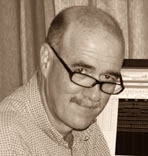 Rainer started out in life as a physicist, obtaining undergraduate and PhD degrees from Princeton and the University of Colorado. Along the way he got hijacked by electronics, computers, and software, but his physics background has made him a generalist with an analytical bent. A consultant since 1986, he gravitated to work involving visual elements, including displays and image processing. Early on he developed computer-to-plate products for the publishing and PC board industries, automation to imprint barcodes on 35mm film at high speed for 3M, and wrote Unix image processing software for SGI workstations. His computer experience ranges from building his own 68000-based wire-wrapped computer from scratch in 1982 and writing PDP-11 Pascal and assembly code, to today’s much nicer .NET and C# environments and a lot of microprocessors along the way. He develops software including graphical applications for both Linux and Windows. In the past five years he has made extensive forays into the world of x-ray physics for medicine, designing x-ray lenses, dosimetry software, and laboratory automation as part of a radiotherapy startup.
Rainer started out in life as a physicist, obtaining undergraduate and PhD degrees from Princeton and the University of Colorado. Along the way he got hijacked by electronics, computers, and software, but his physics background has made him a generalist with an analytical bent. A consultant since 1986, he gravitated to work involving visual elements, including displays and image processing. Early on he developed computer-to-plate products for the publishing and PC board industries, automation to imprint barcodes on 35mm film at high speed for 3M, and wrote Unix image processing software for SGI workstations. His computer experience ranges from building his own 68000-based wire-wrapped computer from scratch in 1982 and writing PDP-11 Pascal and assembly code, to today’s much nicer .NET and C# environments and a lot of microprocessors along the way. He develops software including graphical applications for both Linux and Windows. In the past five years he has made extensive forays into the world of x-ray physics for medicine, designing x-ray lenses, dosimetry software, and laboratory automation as part of a radiotherapy startup.
Rainer spent many years developing algorithms, electronics, and CMOS backplanes in the microdisplay industry, introducing FPGAs and VHDL to his former employer. He has recently branched out into larger formats including direct-view displays for portable applications, digital cinema and 3D. Aside from 15 years experience with VHDL for FPGAs and Verilog for ASICs, he really enjoys using his math and analytical skills to develop higher-level algorithms, sometimes using Mathematica, and realizing them in hardware. He has worked on precision temperature controllers and liquid crystal characterization instruments. He has developed for Opal Kelly’s XEM6310, XEM6010, XEM3050, XEM3010, and XEM3001 modules. He is currently designing Xilinx Spartan-6 systems while also continuing to use Opal Kelly boards for scientific instrumentation and display controllers. Born in Germany, he really likes it when you pronounce his first name correctly (rhyming with “miner”) and would love to hear about your challenging projects, both large and small.
